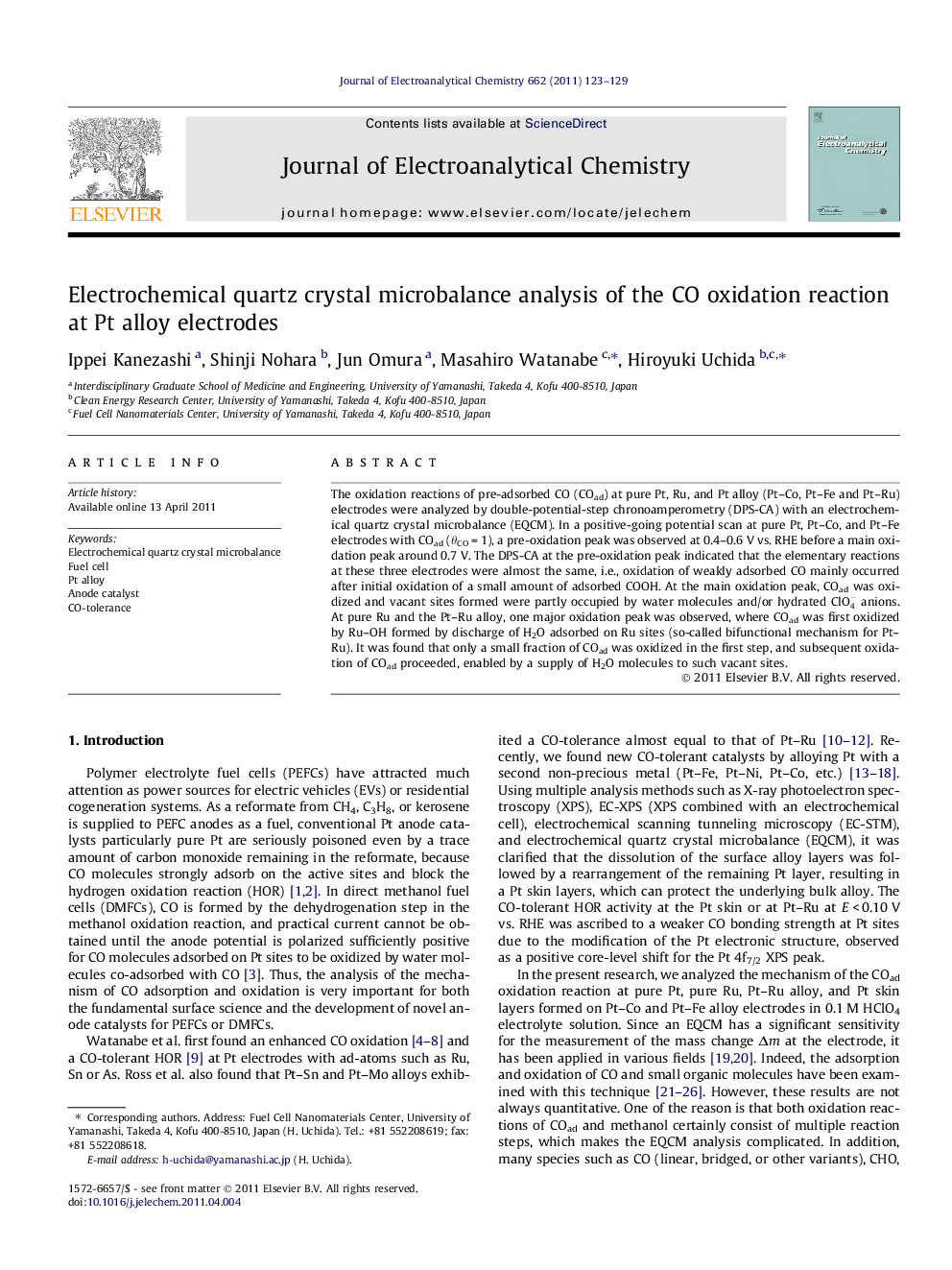| Article ID | Journal | Published Year | Pages | File Type |
|---|---|---|---|---|
| 219433 | Journal of Electroanalytical Chemistry | 2011 | 7 Pages |
The oxidation reactions of pre-adsorbed CO (COad) at pure Pt, Ru, and Pt alloy (Pt–Co, Pt–Fe and Pt–Ru) electrodes were analyzed by double-potential-step chronoamperometry (DPS-CA) with an electrochemical quartz crystal microbalance (EQCM). In a positive-going potential scan at pure Pt, Pt–Co, and Pt–Fe electrodes with COad (θCO = 1), a pre-oxidation peak was observed at 0.4–0.6 V vs. RHE before a main oxidation peak around 0.7 V. The DPS-CA at the pre-oxidation peak indicated that the elementary reactions at these three electrodes were almost the same, i.e., oxidation of weakly adsorbed CO mainly occurred after initial oxidation of a small amount of adsorbed COOH. At the main oxidation peak, COad was oxidized and vacant sites formed were partly occupied by water molecules and/or hydrated ClO4- anions. At pure Ru and the Pt–Ru alloy, one major oxidation peak was observed, where COad was first oxidized by Ru–OH formed by discharge of H2O adsorbed on Ru sites (so-called bifunctional mechanism for Pt–Ru). It was found that only a small fraction of COad was oxidized in the first step, and subsequent oxidation of COad proceeded, enabled by a supply of H2O molecules to such vacant sites.
► Electrochemical quartz crystal microbalance analysis of COad oxidation at Pt alloys. ► Oxidation of a small amount of COOHad triggers COad oxidation at Pt, Pt-Co & Pt-Fe. ► COad is first oxidized by Ru-OH via the so-called bifunctional mechanism at Pt-Ru. ► Supply of H2O molecules to vacant sites enables COad oxidation to proceed further.
